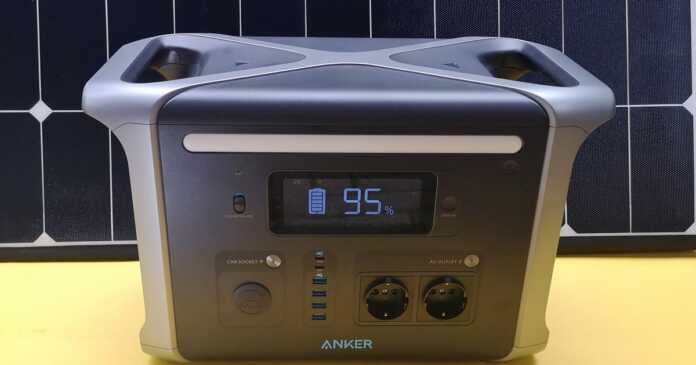LiFePo4 batteries with 1229 Wh, 230 V outputs with 1500 W, fast charging and UPS function – the solar generator Powerhouse 757 from Anker offers a successful overall package at a high price. TechStage has tested the mobile power storage for photovoltaics.
Power stations with an integrated solar generator and 230 V socket enable consumers to be supplied with power independently and far from the mains. Thanks to high performance and numerous connection options including 12 V connections and USB ports, the devices are ideal for hobbies, work or as an emergency power supply. The batteries are usually charged either with the power supply unit at the socket, with a 12 V vehicle connection or with the help of a solar module. The devices offer maximum flexibility and promise independence.
This power station test is part of our Outdoor and Camping theme worlds . Here we show, for example , high-tech gadgets for hiking , binoculars with a range finder or explain what to look out for when buying a flashlight .
This time it’s about the Portable Powerstation 757 from Anker . The manufacturer is a well-known supplier of electronic accessories, which has repeatedly impressed us with its decent price-performance ratio in the past. This test shows whether the strongest power station from Anker can convince.
The design of the black and silver anchor Powerhouse 757 differs significantly from the visual appearance of the smaller models Powerhouse 521 (test report) and Powerhouse 535 (test report) and we really like it. With dimensions of 463 mm x 288 mm x 237 mm and a weight of around 20 kg, the top model from Anker is still mobile, but the Powerhouse 757 is far too bulky for bike tours or hikes. The data speak for themselves: up to 1500 W output power (pure sine wave) per 230 V socket and a capacity of 1229 Wh.
The rectangular, rounded housing has two handles attached to the side of the upper edge. This makes transport easier and ensures a flat surface. This allows other items to be stacked on top of it, which we like.
However, the design is not entirely independent. How we got there is shown in the following photo, which shows the Powerhouse 757 in front of the solar generators Ecoflow Delta (test report) and Ecoflow River (test report) . Ultimately, Anker seems to have taken these two devices as a model. Whether it’s copied or happened by accident – we like the design and the workmanship is impeccable and of high quality.
Anker has placed all power outlets, buttons, lamp and status display on the front. Behind a small flap on the back are only the fuse, the power supply socket and the input for photovoltaics or the car power supply via XT60 plug.
On the front, at the top, there is an LED that runs across the entire width of the housing as emergency lighting. Their power button is placed on the right underneath. In the middle we find a small reset button, the power save switch, the large and bright status display and the display button. Below that on the left is the 12 V socket (cigarette lighter) with up to 120 W of power and its own power button, the total of six USB ports and the two 230 V sockets including the on/off button. What strikes us positively are the high-quality metal buttons for 12 V and 230 V outputs. It’s a shame that Anker doesn’t also use them for the lamp and display. It’s also a shame that Anker only put a protective cap on the 12 V connection. We would much prefer covered sockets for outdoor use. Bluetti Poweroak AC200 Max (Review) .
The Powerhouse 757’s bright and large status display looks good and leaves a positive impression. In addition to the exact remaining capacity in 1 percent increments, the active outputs including the output power are shown here. The applied input power can also be seen at a glance. This helps, for example, when aligning the photovoltaic panel or panels. The remaining battery life or charging time and the power save mode are also visible. A practical extra that is only used on some models.













